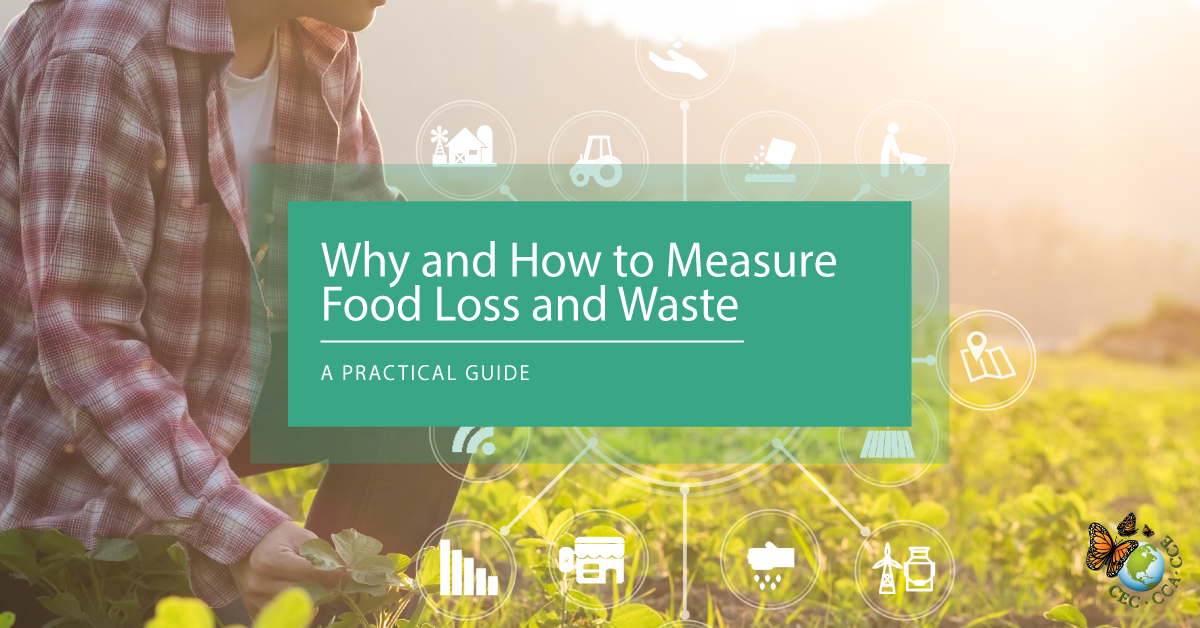Businesses Can Save Money and the Environment with this New Practical Guide for Reducing Food Waste
Montreal, 7 March 2019—The Commission for Environmental Cooperation (CEC) has released a practical guide and a technical report to measure food loss and waste across the food supply chain in Canada, Mexico and the United States.
"Why and How to Measure Food Loss and Waste: A Practical Guide" is an easy-to-use tool for businesses to apply in measuring the quantity of food wasted in their process activities. This new tool has the power to alter an organization’s practices, reducing operational costs while also helping to reduce the environmental impacts of our food production system.
“There are enormous environmental, social and economic costs from the loss and waste of food and this also contributes significantly to greenhouse gas emissions,” says César Chávez, the CEC’s executive director. “If we can help a business measure food waste, we can help them understand the true cost associated with this and the financial and environmental advantages of prevention,” Chávez adds.
The CEC is calling on food producers, retailers, restaurant operators, food service providers, business associations and stakeholders across North America to start measuring food waste today using our new Practical Guide.
The CEC is also releasing two food waste measurement case studies, on Beau’s Brewing Co. in Vankleek Hill, Ontario, and on Toks Restaurants in Guadalajara, Jalisco, Mexico. Both organizations have a longstanding commitment to sustainability and they both used the CEC tools in the practical guide to maximize their business potential while helping the environment and communities.
“We really see the social and environmental value and cost saving potential of food waste prevention and reduction. We’re keen to share this with the restaurant industry in Mexico because of the positive impact it has on communities and the environment,” said Gustavo Pérez Berlanga, Toks Restaurant Group’s Senior Vice President for Social Responsibility.
The practical guide provides easy-to-use measurement guidelines for every segment of the food value chain, from primary production, to manufacturing, to the food service industry.
The technical report, "Quantifying Food Loss and Waste and Its Impacts," that will be released along with the guide, provides methods to quantify food loss and waste and food surplus across the supply chain, as well as tools to estimate the environmental, financial, and social impacts of food loss and waste.
The practical guide and the technical report are the results of a close collaboration with key stakeholders from the private sector and experts from the three countries.
FACTS ABOUT FOOD LOSS & WASTE
- In North America, approximately 168 million tons of food loss and waste are generated annually
- Food loss and waste equates to more than 13 million tons in Canada, 28 million tons in Mexico and 126 million tons in the United States
- Food loss and waste amounts to economic losses of US$278 billion per year
- North America generates approximately 193 million tons of GHGs

About the CEC
The Commission for Environmental Cooperation (CEC) was established in 1994 by the governments of Canada, Mexico and the United States through the North American Agreement on Environmental Cooperation, a parallel environmental agreement to NAFTA. As of 2020, the CEC is recognized and maintained by the Environmental Cooperation Agreement, in parallel with the new Free Trade Agreement of North America. The CEC brings together a wide range of stakeholders, including the general public, Indigenous people, youth, nongovernmental organizations, academia, and the business sector, to seek solutions to protect North America’s shared environment while supporting sustainable development for the benefit of present and future generations
The CEC is governed and funded equally by the Government of Canada through Environment and Climate Change Canada, the Government of the United States of Mexico through the Secretaría de Medio Ambiente y Recursos Naturales, and the Government of the United States of America through the Environmental Protection Agency.